
|
|
|
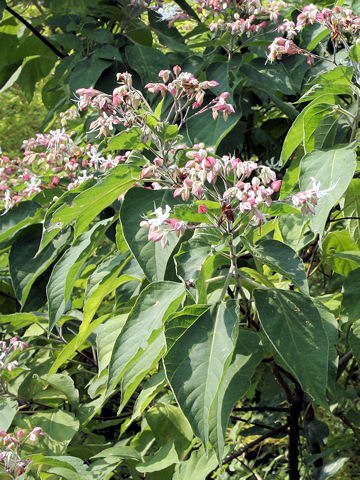 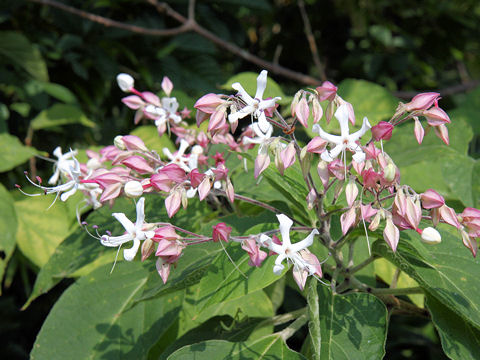 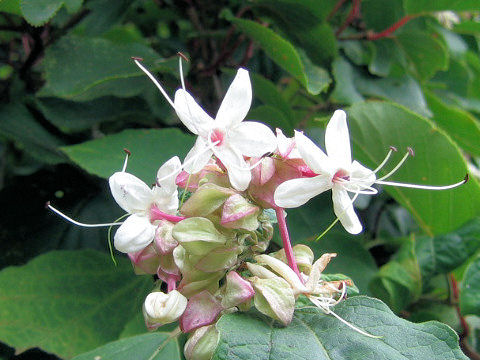 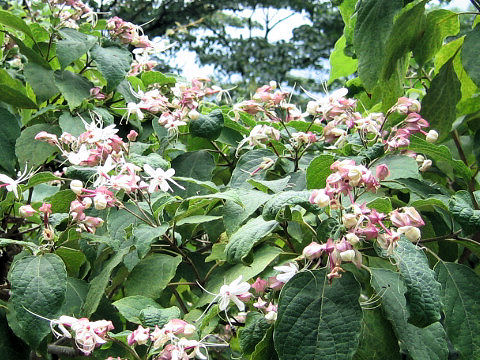 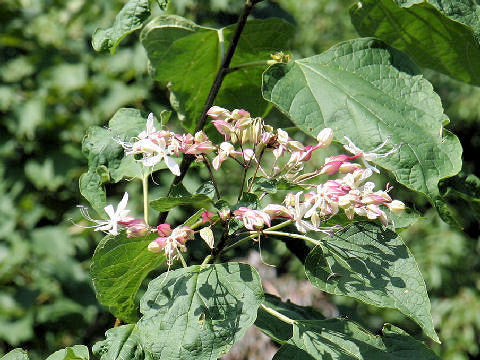 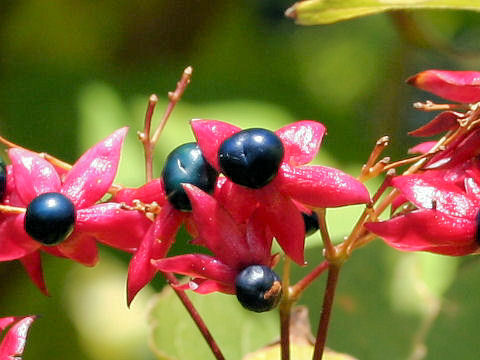 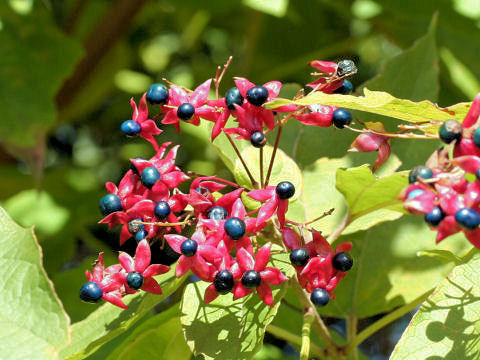 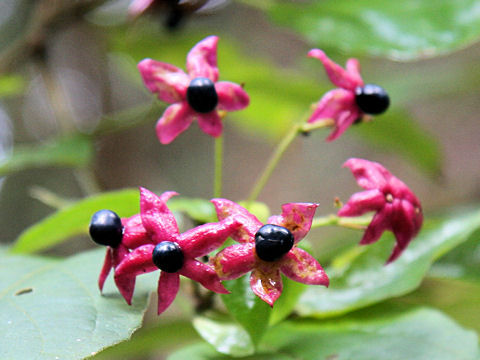 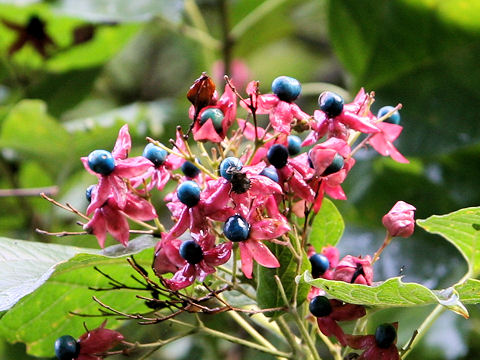 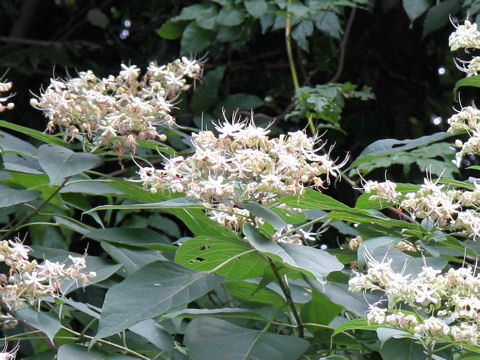 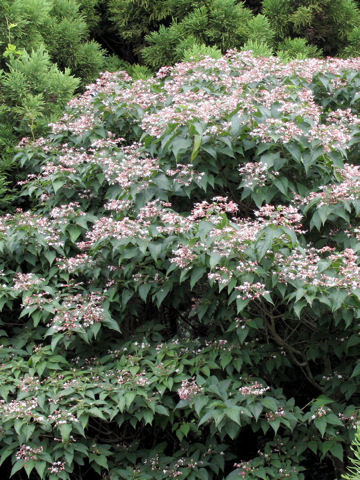 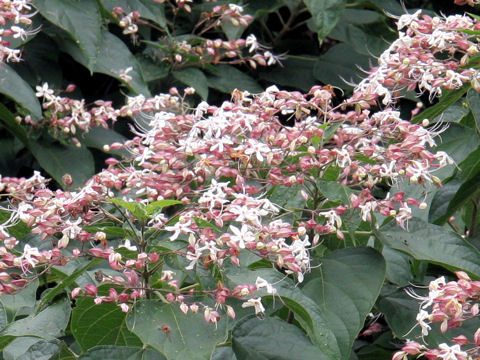 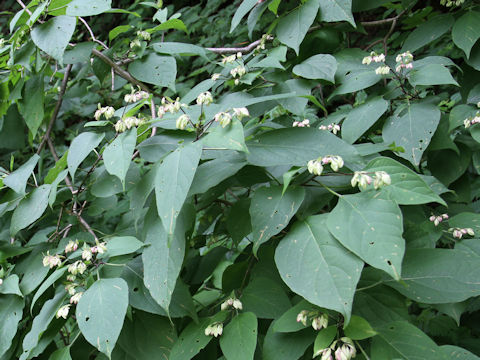 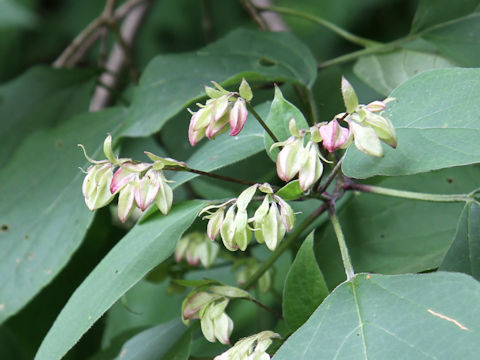 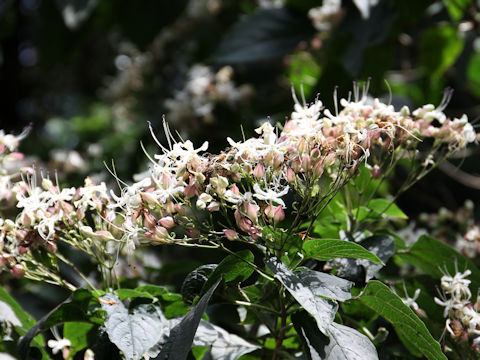 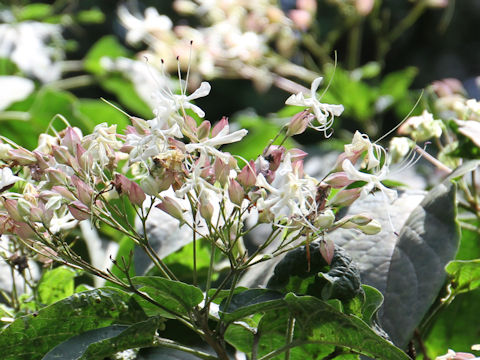 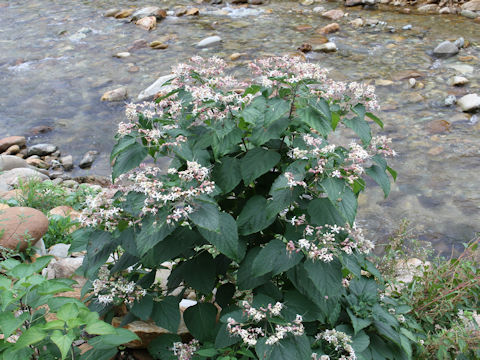 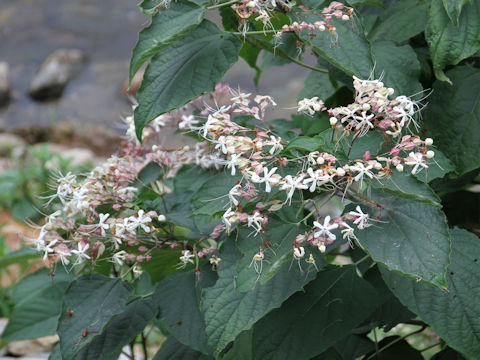 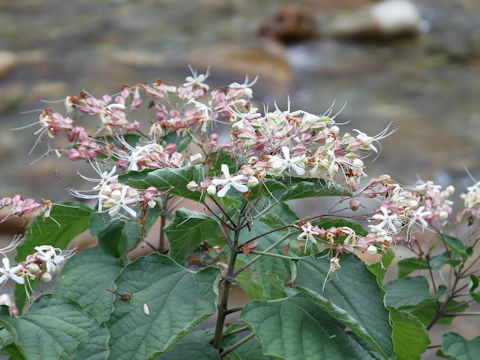 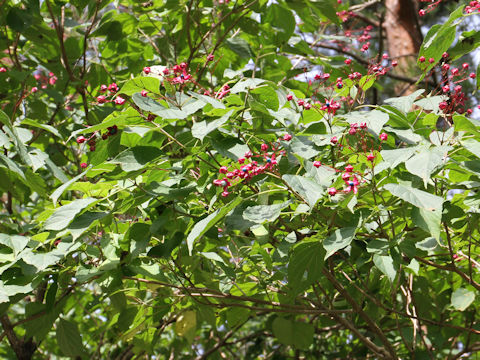 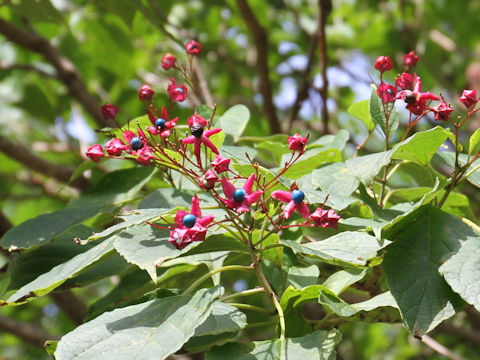 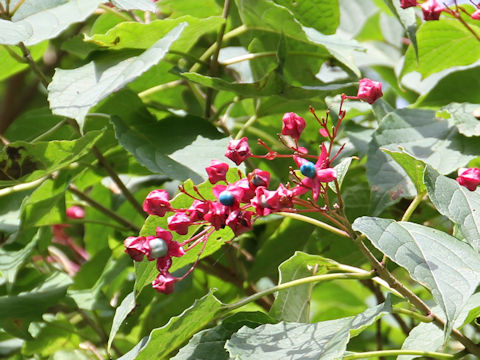 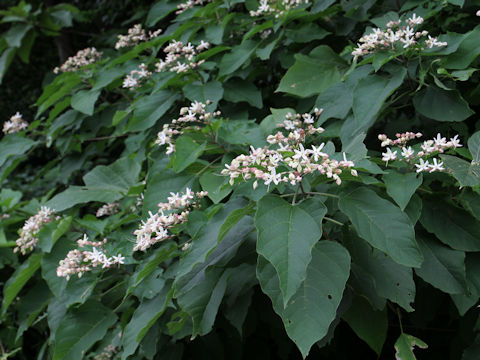 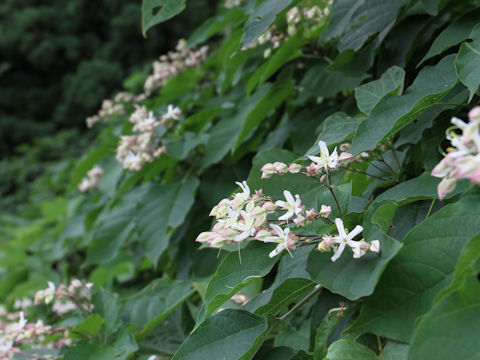 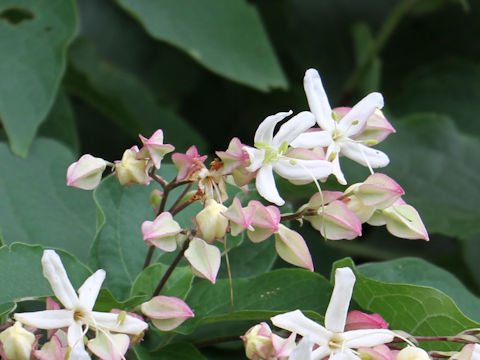 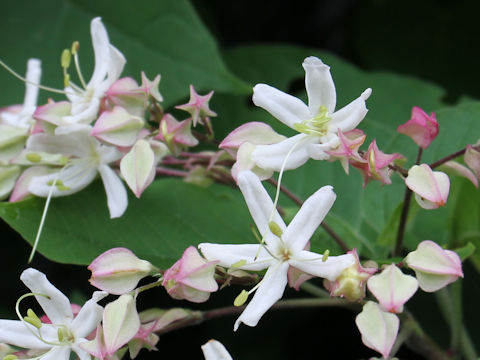 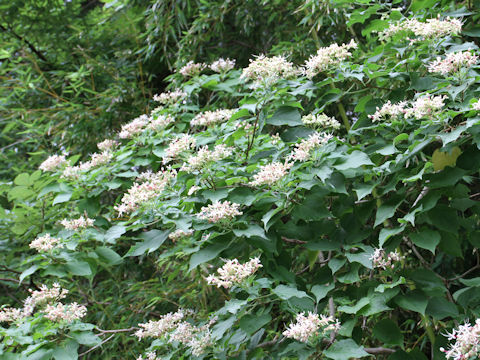 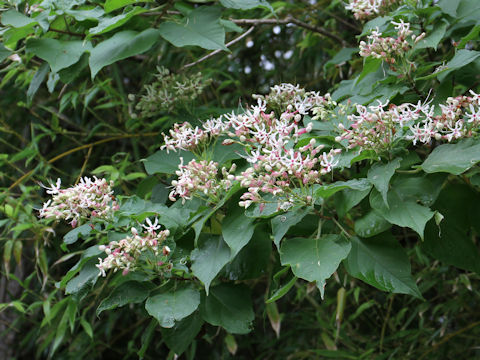 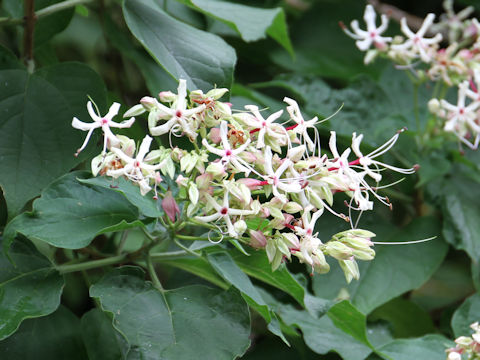 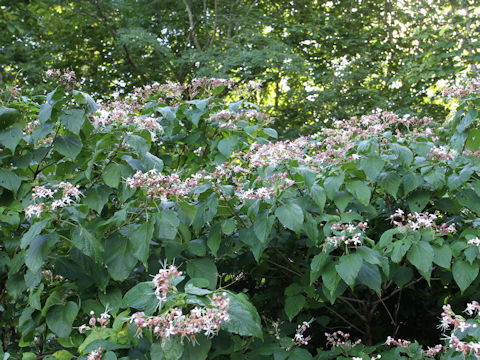 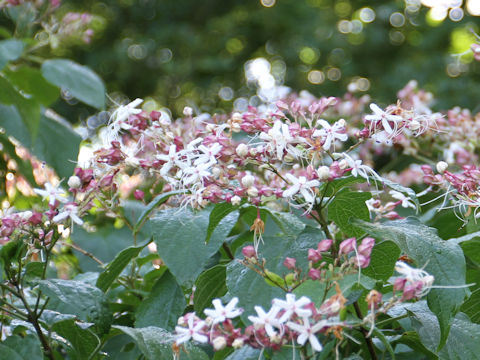 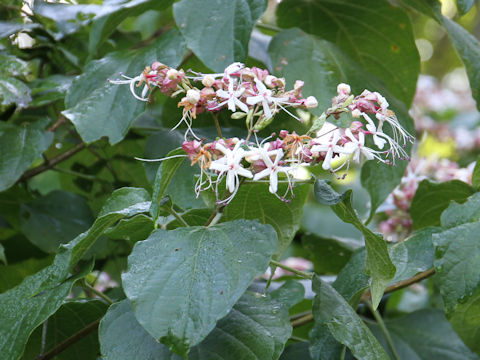 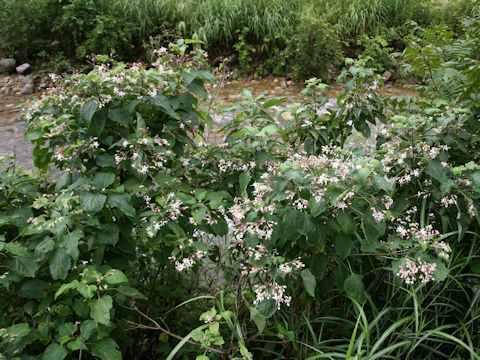 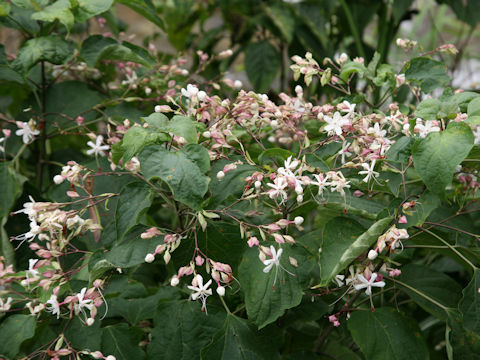 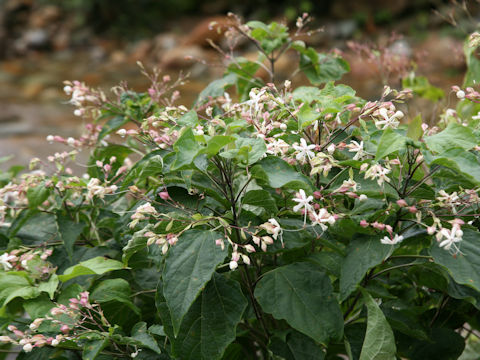 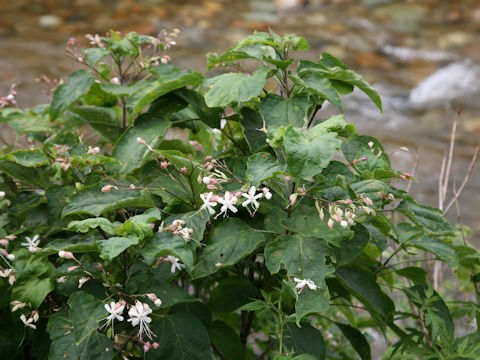 |
|
|
|
わが国の各地をはじめ、朝鮮半島や中国の温・暖帯地方に分布しています。山野の林縁や河岸などに生え、高さは1〜3メートルになります。花はいい香りですが、葉や枝を傷つけると悪臭を放つため、「くさぎ」という名前がつきました。若葉は食用となります。葉を小枝ごと天日で乾燥させて煎じると、リューマチや高血圧、下痢によいとされています。また、幹や根に入るクサギの虫は、子どもの癇(かん)の薬です。台湾華語では、「海州常山」。ところ変わって欧米では、この匂いがピーナツバターに似ていると感じるみたいで、「ピーナツブッシュ」の英名があります。 |
|
|
クマツヅラ科クサギ属の落葉低木で、学名は Clerodendrum trichotomum。英名は Harlequin glorybower、Peanut bush。 |
|
|
The Harlequin glorybower (Clerodendrum trichotomum) belong to Verbenaceae (the Verbena family). It is a small deciduous tree that is native to Japan, the Korean Peninsula, the temperate and warm-temperate zone of China. This tree grows in forest edges or stream banks and can reach 1-3 m in height. The flowers are savory, though the plant throws off bad odor the when breaked leaves or branches. The young leaves are used as food. It is said that it is good for rheumatism, high blood pressure and diarrhea when the leaves with the twigs are dried in the sun and decocted. In addition, the harlequin glorybow insects that enter the trunk and roots are medicines for infantile neurosis characterized by crying at night and convulsions. In Taiwanese Mandarin, it is called "海州常山". By the way, in Europe and the United States, it seems that this scent resembles peanut butter, and there is an English name for "peanut bush". |
|
|
[上・中1] 東京都江戸川区「葛西臨海公園」にて、2008年08月03日撮影。 [中2・中3] 奈良県上北山村「伯母ヶ峰」にて、2005年08月02日撮影。 [中4] 長野県伊那市長谷黒河内「黒河内林道」にて、2006年08月24日撮影。 [中5・中6] 静岡県浜松市「浜松市フルーツパーク」にて、2005年11月19日撮影。 [中7] 大阪府交野市「大阪市大付属植物園」にて、2007年11月10日撮影。 [中8] 愛知県新城市門谷にて、2007年10月05日撮影。 [中9] 宮城県仙台市「青葉城址」にて、2010年08月07日撮影。 [中10・中11] 千葉県東庄町小貝野にて、2010年08月19日撮影。 [中12・中13] 福島県天栄村「二岐山」にて、2014年07月26日撮影。 [中14・中15] 千葉県香取市大角にて、2015年08月19日撮影。 [中16〜中18] 山形県小国町小玉川にて、2016年08月15日撮影。 [中29〜中31] 同上にて、2018年08月19日撮影。 [中32〜34・下] 同上にて、2021年08月15日撮影。 [中19〜中21] 宮城県川崎町「笹谷峠」にて、2016年09月24日撮影。 [中22〜中25] 山形県小国町片貝にて、2017年08月11日撮影。 [中26〜中28] 新潟県粟島浦村にて、2017年08月18日撮影。 |

|
|
Shu Suehiro |